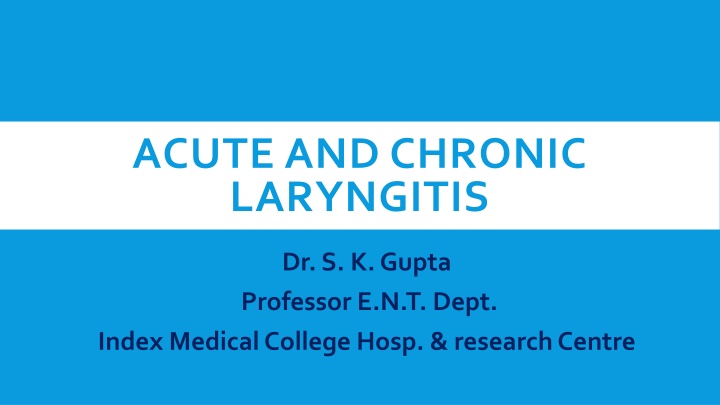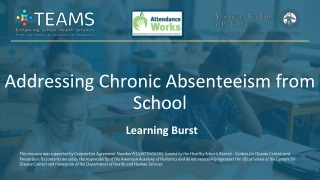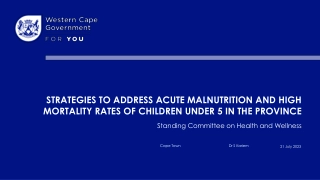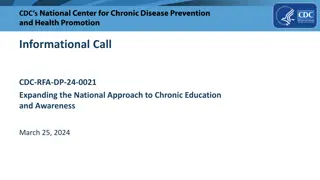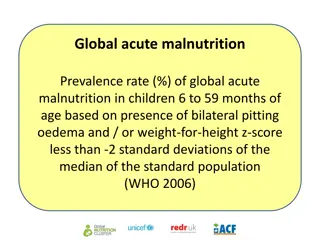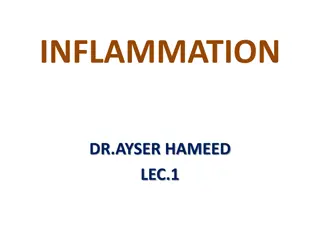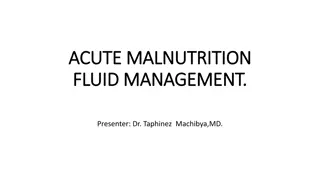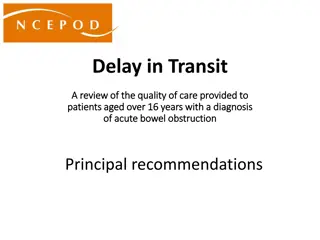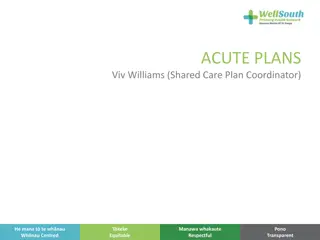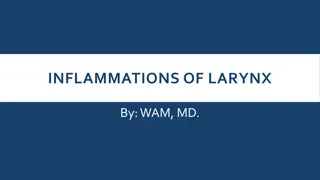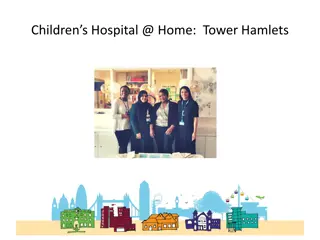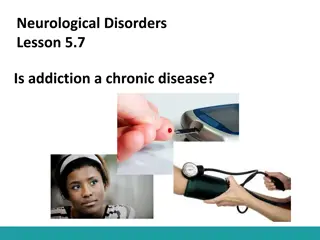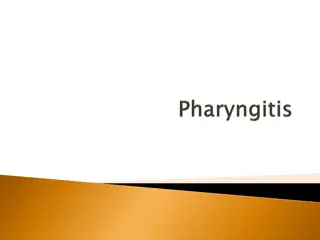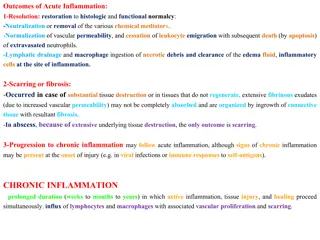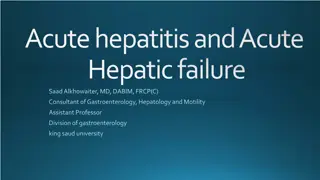Acute and Chronic Laryngitis
Acute and chronic laryngitis, symptoms, signs, treatment, and investigations explained by Dr. S. K. Gupta. Details on acute simple laryngitis, acute supraglottic laryngitis (epiglottitis), and more. Learn about the causes, symptoms, and treatment options for laryngitis.
Download Presentation

Please find below an Image/Link to download the presentation.
The content on the website is provided AS IS for your information and personal use only. It may not be sold, licensed, or shared on other websites without obtaining consent from the author.If you encounter any issues during the download, it is possible that the publisher has removed the file from their server.
You are allowed to download the files provided on this website for personal or commercial use, subject to the condition that they are used lawfully. All files are the property of their respective owners.
The content on the website is provided AS IS for your information and personal use only. It may not be sold, licensed, or shared on other websites without obtaining consent from the author.
E N D
Presentation Transcript
ACUTE AND CHRONIC LARYNGITIS Dr. S. K. Gupta Professor E.N.T. Dept. Index Medical College Hosp. & research Centre
Acute Laryngitis Acute non- specific Acute specific Acute laryngo- tracheo- bronchitis Acute simple laryngitis Acute epiglottitis Diphtheritic laryngitis
ACUTE SIMPLE LARYNGITIS Influenza, rhino, adeno virus, secondary bacterial infection Allergy, winter and spring, voice abuse, irritants, alcohol, chemicals, acid reflux Vasodilatation and hyperemia of mucosa, extra cellular edema, mucopurulant exudate, pseudo membrane, superficial ulceration, perichondritis
SYMPTOMS Hoarseness , Dysphonia, Phonasthenia, Aphonia Pain in throat Painful dry cough Same symptoms more severe in children Dyspnea
SIGNS Fever Pharyngeal congestion Congestion and edema of epiglottis, AE folds, ventricular bands, Vocal cords Thick mucus/ secretions on vocal cords
TREATMENT OF AC SIMPLE LARYNGITIS Avoid alcohol and cold atmosphere Voice rest Humidification Mucolytics agents NSAIDS Cough suppressants Broad spectrum antibiotics if sec infection
ACUTE SUPRAGLOTTIC LARYNGITIS (EPIGLOTTITIS) Haemophilus influenzae- type B , common in pediatric age group Severe cellulitis of epiglottis of AE fold, congestion and edema of mucosa, inspissated secretions, obstruction of laryngeal vestibule preventing effective coughing to remove secretions Symptoms- Sore throat, Dysphagia/ Odynophagia, Muffled (hot potato) voice, FB sensation in throat, Inspiratory Stridor
INVESTIGATIONS WBC count X-ray soft tissue neck lateral view/ Chest Throat swab/ Blood culture- H. Influenzae Type B Flexible Laryngoscopy
ACUTE SUPRAGLOTTIC LARYNGITIS Cherry red epiglottis X-ray soft tissue neck shows edematous epiglottis- Thumb sign
ACUTE SUPRAGLOTTIC LARYNGITIS D/D of Stridor in children Acute Laryngo- tracheo-bronchitis Laryngeal Diphtheria Angioneurotic edema Laryngeal edema sec to retropharyngeal abscess Acute tonsillitis
TREATMENT Hospitalization I/V antibiotics (ceftriaxone 75mg/kg/day 12 hrly) or cefotaxim 50-100 mg/kg/day 6hr Humidification with O2 Steroids (I/V Hydrocortisone 100mg) Intubation/ Tracheostomy
ACUTE LARYNGO-TRACHEO- BRONCHITIS Acute inflammation of the larynx and lower respiratory tract involving subglottis, trachea and tracheo-bronchial tree.
ACUTE LARYNGO-TRACHEO-BRONCHITIS.. Etiology & Symptoms Myxovirus/ para influenza V , H. influenzae, pneumococcus. H Strepto. Seen below 5year age, starts with URTI, Fever, cough, Biphasic Stridor, air hunger cyanosis in severe cases, weak cry, Seal s bark
INVESTIGATIONS X-ray neck AP view- Steeple sign X-ray neck soft tissue lat view- subglottic narrowing X-ray chest- Pneumonic patches WBC count Blood culture
ACUTE LARYNGO-TRACHEO-BRONCHITIS.. Treatment Hospitalization in PICU Humidification Mucolytics O2 administration I/V fluids, Antibiotics, steroids Tracheostomy/ endo tracheal intubation
Acute Epiglottitis Acute Laryngo-tracheo-bronchitis Pathogens H. Influenzae type B Para influenza V type I and II Age 2-7 years 3 months 5 year Site of obstruction Supra glottis Subglottis Flu symptoms Absent Present Onset Abrupt within hours Gradual within days Temperature High grade Low grade Appearance Toxic Non Toxic Cough Absent Barking cough Dysphagia Severe Usually Absent Drooling Present Absent Family H/o URI Absent Present X Ray STN Thumb print sign in lat view Steeple sign in AP view
LARYNGEAL DIPHTHERIA Often seen secondary to Faucial Diphtheria Corynebacterium diphtheriae < 10 years, incidence reduced because of immunization
LARYNGEAL DIPHTHERIA..SYMPTOMS Insidious onset Hoarseness Cough Inspiratory Stridor with cyanosis and intercostal in drawing with recession of chest wall Cervical lymphadenitis
SIGNS.. Features are same as Faucial diphtheria, superficial necrosis of epithelium of larynx, membrane seen over VC and vestibule, presentation with Stridor . Cervical lymphadenitis Any form of membrane seen in pharynx and larynx should raise suspicion of Diphtheria
INVESTIGATIONS.. CBC, ESR, Throat swab grown on Loffler s serum slope or blood agar. Urine shows presence of Albumin Flexible Laryngoscopy
TREATMENT Prophylaxis Isolation Hospitalization ADS -40K to 100K I/V diluted in saline given in 1 hour. I/2 I/V and intramuscular Antibiotic- Injection Crystallin Penicillin, Erythromycin. Intubation/ Tracheostomy Bronchoscopic removal of crusts
SALIENT POINTS Acute epiglottitis- H Influenzae B- Cherry red epiglottis- Thumb sign Acute LTB- Para influenza virus type I & II - fatal airway obstruction - subglottic narrowing- Steeple sign Differential diagnosis b/n Laryngo-tracheo-bronchitis and Supraglottitis / Epiglottitis Laryngeal diphtheria- Corynebacterium d.-Stridor- membrane on VC- Anti Toxin 20 k 100K in single dose - Tracheostomy
CHRONIC LARYNGITIS Chronic inflammatory changes in the larynx as a result of persistent irritation / infection due to single / multiple sources affecting the larynx, leading to permanent mucosal changes like glandular hypertrophy, keratosis and sub epithelial hemorrhage.
ETIOLOGY Infections of paranasal sinus & Oropharynx, lungs Occupational factors Smoking / Alcohol Chronic cough, mouth breathing and throat clearing Vocal Abuse GERD/ LPR Inadequate hydration
PATHOGENESIS Irritations of laryngeal mucosa- localized/diffused inflammatory changes Hyperemia- vasodilatation- submucosal haemorrhage- interstitial edema exudates- infiltration of mononuclear cells hyperplasia of epithelium- Pseudo stratified ciliated columnar epithelium changes to squamous type invasion of fibroblasts-sub epithelial hyalinization- thickening and deforming squamous metaplasia- keratosis Hyper kinetic voice/ vocal abuse- vocal nodule- polyp- contact ulcers.
CHRONIC LARYNGITIS.. CLASSIFICATION Non Specific Hyperemic Hyper plastic Hemorrhagic Vocal nodule Vocal polyp Specific Tubercular Syphilis Leprosy Scleroderma Laryngitis Sicca
CHRONIC DIFFUSE LARYNGITIS..SYMPTOMS Hoarseness Raw sensation in throat Vocal fatigue Aphonia Pain on phonation/ swallowing Repeated throat clearing
SIGNS True VC loose pearly white appearance and are pink or dull red Engorged blood vessels seen on VC surface VC appear with rounded margins and edematous Sticky mucus secretions seen on VC Polypoidal changes in true and false VC Heaping of epithelium with Keratosis Submucosal haemorrhage
Acute Laryngitis Chronic laryngitis
INVESTIGATIONS Tele laryngoscopy- Flexible laryngoscopy- Stroboscopy X-ray chest-PNS Nasal endoscopy Fiber optic oesophagoscopy Microlaryngoscopy- Tolulidine blue staining- Biopsy
TREATMENT Elimination of irritant Control of infection Treat allergy/ GERD Voice rest / Voice training Humidification Steroids as topical inhalers Mucolytics Fluids Vocal hygiene Surgery- MLS Supra vital staining- stripping of cords- sub mucosal resection of nodule/ polyp
VOCAL NODULE (SINGERS NODULE) Common in people with high pitch voice Caused by excessive vibration at the junction of ant 1/3- post 2/3 of VC Sub mucosal edema, haemorrhage, inflammatory edema which collects and gets organized, hyalinization and fibrosis Medical management, Voice therapy Videostroboscopy/ MLS
VOCAL CORD POLYP Disorder of vocal abuse seen in professional voice users characterized by hoarseness and presence of sessile or pedunculated mass arising from one of the VC. Most common benign lesion of larynx confined to middle of VC Etiology similar to vocal nodule, sometimes follows acute respiratory infection Single episode of vocal strain may cause a vocal polyp
VOCAL CORD POLYP Hoarseness, sticky sensation in throat, repeated throat clearing Laryngoscopy shows solitary polypoidal lesion on one VC better visualized on phonation Treatment by MLS and speech therapy
TUBERCULAR LARYNGITIS Due to direct implantation from sputum. Post part of larynx Catarrhal stage Granulomatous stage Ulcerative stage Cicaterization
TUBERCULAR LARYNGITIS.. Clinical Features- Hoarseness, Odynophagia, Dysphagia, cough, weight loss. VC hyperemic mouse nibbled ulcers Mamillated swelling arytenoid and inter arytenoid area. Turban epiglottis Investigations- X ray Chest, Sputum exam. C& S, MT, Biopsy Treatment AKT therapy as per C& S report
LEPROSY OF LARYNX (HANSENS) Mycobacterium Leprae Lepromatous type affects Larynx. Associated skin lesions anaesthetic patches Stages- Catarrhal Muffled voice, Dyspnea, features of leprosy in other parts of body , cervical nodes, a hook over a button hole appearance of epiglottis Biopsy Dapsone, Clofazimine, Rifampicin in combination therapy - Nodular - Ulcerative - Cicaterization
SYPHILITIC LARYNGITIS Treponema Pallidium Acquired Syphilis- Hoarseness stridor dyspnea Congenital Stages- Infiltration Early form within first few months after birth, laryngeal oedema, infantile snuffles, Hepato- spleenomegaly - Granulomatous- Gumma, wash-leather ulceration - Ulcerative Late form 2-10 age, laryngeal ulceration, stenosis stridor, interstitial keratitis, nerve deafness, frontal bossing, Hutchinson s tooth, saddle nose, clutton joints - Cicatrization Darkfield microscopy, VDRL, RPR(rapid plasma reagin), Wassermann reaction, TPI, TPHA Procaine Penicillin for 10 days, Doxycycline 300 mg for 21 days, Benzathine penicillin 1.8 gm/4ml single dose I/M
SCLEROMA OF LARYNX Klebsiella Rhinoscleromatis Disease spreads from nose, trachea and bronchus Hoarseness, cough and progressive dyspnea. Swelling of subglottis Tetracyclin is drug of choice, Ciprofloxacilin and Rifampicin also effective. Steroid to reduce local inflammation Tracheostomy
LARYNGITIS SICCA (ATROPHIC) Associated with Atrophic Rhinitis, atrophy of laryngeal mucosa and crusting. Hoarseness, cough, Dyspnea, foul smelling crusts and bleeding, Humidification, Laryngeal spray with glycerin or oil of pine, Expectorants containing ammonium chloride and Iodides to loosen crusts.
EDEMA GLOTTIDIS Etiology- Infections, Trauma, Iatrogenic, Neoplasm, Allergy, Radiation, Systemic disease Inspiratory Stridor, I/L , Tele-laryngoscopy, D/L, X-Ray STN Management- of Cause - Steroids - Adrenalin 1:1000 , 0.3-0.5 ml I/M and repeated in 15 minutes in Angioneurotic edema. - Intubation, Tracheostomy
VOCAL NODULE Common in people with high pitch voice Caused by excessive vibration at the junction of ant 1/3- post 2/3 leading to sub mucosal edema, haemorrhage, inflammatory edema which collects and gets organized, hyalinization and fibrosis Medical management, Voice therapy Videostroboscopy/ MLS
REINKES EDEMA A submucosal space along the length of true VC from sup arcuate line to inf. Arcuate line, due to the loose attachment of mucosa to the vocal ligament. Blood vessels and lymphatics are almost absent in Reinke s space which prevents early spread of cancer. Reinke s edema Fusiform swelling of VC due to edema of Reinke s space.
